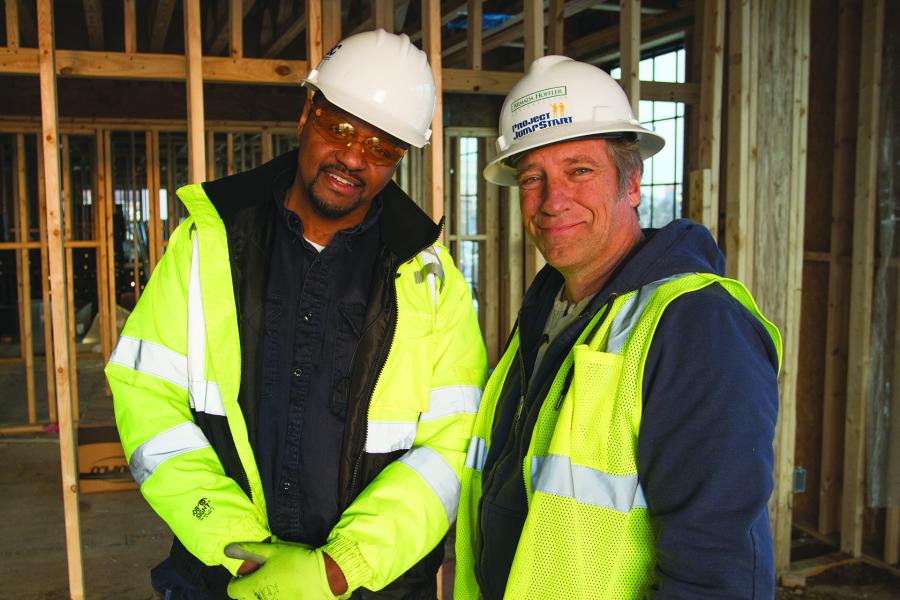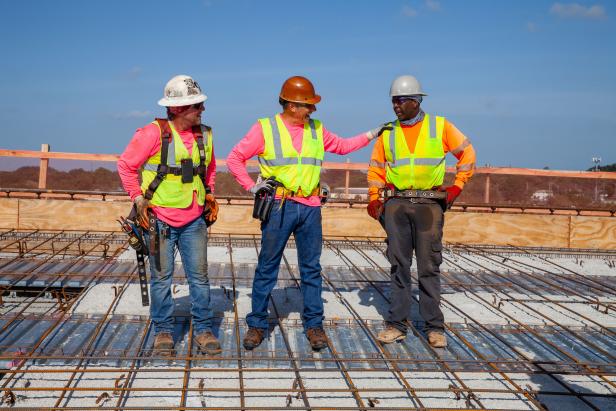by Gary Fleisher
The construction industry is currently grappling with a severe shortage of skilled trade workers, a situation that has escalated dramatically and reflects a significant imbalance in the labor market. This crisis is spurred by various factors, including a retiring workforce, a cultural shift towards white-collar jobs at the expense of trades, rapid technological advancements in construction, booming demands due to urbanization and infrastructure renewal, and a general stigma and lack of awareness about the opportunities in the trade professions.

photos – Mike Rowe, Dirty Jobs
As a substantial portion of the current workforce nears retirement age, the industry faces a significant gap in skills and knowledge, as younger generations are not filling these roles at the necessary rate. This situation is exacerbated by societal trends that favor four-year degrees over vocational training, leading to a decreased number of young individuals entering the construction trades. Moreover, the construction sector is undergoing rapid technological evolution, requiring workers who are adept in both traditional skills and modern technologies. This need for dual expertise is outpacing the rate at which many can acquire these new skills.

Complicating matters further, the construction industry is experiencing a boom, driven by urbanization, infrastructure renewal, and a growing population, resulting in an increased number of complex projects that demand more labor than is currently available. Additionally, the trades suffer from a perception issue, often seen as less desirable or prestigious than other career paths, deterring potential new entrants from considering a career in this field.
The consequences of this shortage are wide-ranging and significant. Construction projects face delays, costs increase, and the quality of work can suffer due to the lack of qualified workers. This not only impacts project timelines and budgets but also places immense pressure on the existing workforce, potentially compromising both safety and well-being.
To address this critical shortage, the construction industry needs to undertake a multi-faceted approach. This includes enhancing trade education and training, improving perceptions of construction careers, and investing in technologies to increase efficiency and attract a new generation to the construction trades. Strategies like partnering with educational institutions for hands-on training and apprenticeship programs, promoting the benefits and opportunities within the trades, incorporating technology into training programs, and offering continuous learning and upskilling opportunities are essential.

Furthermore, support from government and industry bodies in the form of incentives and facilitating knowledge sharing can encourage more investment in training. International recruitment and training can also help fill immediate gaps, provided these workers are offered ample training and upskilling opportunities. Making construction sites safer and ensuring the well-being of workers can also make the profession more attractive.
The construction industry is at a pivotal point, facing a severe shortage of skilled trade workers. A concerted effort is required to revitalize trade education, shift perceptions, and integrate new technologies into training programs. By adopting these strategies, the industry can hope to not only rebuild its workforce but also the infrastructure and buildings crucial to society’s growth and development.
.



